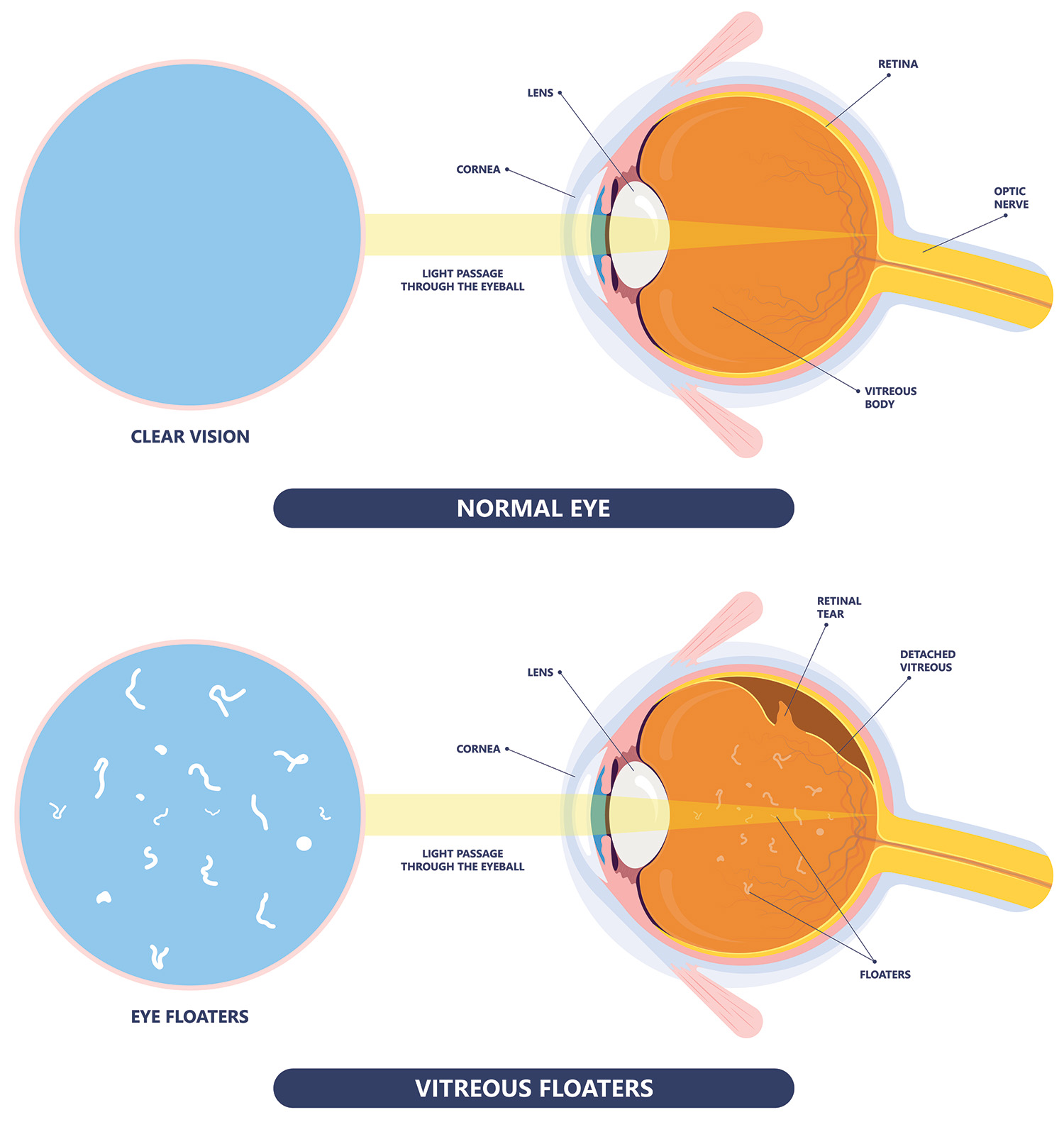Floaters are tiny clumps of gel or cells that are suspended in the clear gel called vitreous that fills the back of the eye. As we get older, the vitreous forms clumps and strands that can block light, and floaters are the shadows of these clumps. Floaters are different sizes, shapes and consistencies and can also act like a moving haze over your vision. It can be normal to have a few small floaters all the time, but a sudden new shower of floaters is usually associated with a vitreous detachment.


A vitreous detachment (also known as a posterior vitreous detachment or PVD) is when the sac of vitreous gel pulls away from its attachment to the retina at the back of the eye. This often causes no symptoms or problems, happens to everyone as we age, and is steadily more common over the age of 50. Sometimes, though the vitreous is stuck to the retina lining the eye, and it pulls hard enough to cause other symptoms or problems. A common symptom that people notice is flashes.
Treatment for most floaters is not required as they often fade over time. If they become debilitating and interfere with your quality of life, you may be a candidate for vitrectomy surgery to remove the floaters. Many patients have had this surgery and noticed improved vision afterward.
A good candidate for this procedure is a patient who complains their vision is often affected from floaters, and that the floaters interfere with their functioning. These patients typically report clouds, gnats, or haze floating into their visual axis when trying to see. They can move their eyes temporarily to see, but it then comes back moments later. We seldom operate on patients under 50 years old. The risk/benefit ratio is better for people who have already had cataract surgery, since they are no longer at risk for cataract progression. They also are familiar with outpatient eye surgery, and the surgery for floaters is similar to cataract surgery.

The flashes that happen with vitreous detachment typically occur in an arc around the outer edges of the eye. They are brief and painless, and often described as like a camera flash or lightning. The flashes themselves are not harmful or damaging, but do indicate that the vitreous is pulling hard enough on the retina to cause the flashes. When it pulls this hard, it can also pull hard enough to cause a rip, or a tear in the retina. A retinal tear is considered a medical emergency which requires evaluation within 24 hours. Often, floaters and flashes are not associated with a tear, but there’s no way of knowing unless you are evaluated by an eye doctor who carefully examines your eye for evidence of a retinal tear.
Posterior Vitreous Detachment is more commonly found: